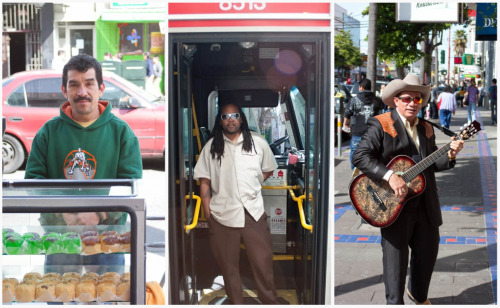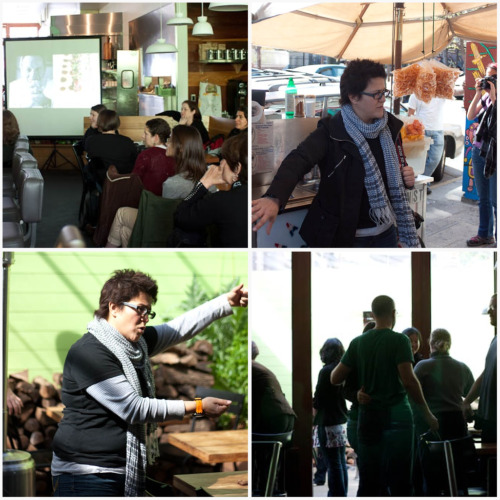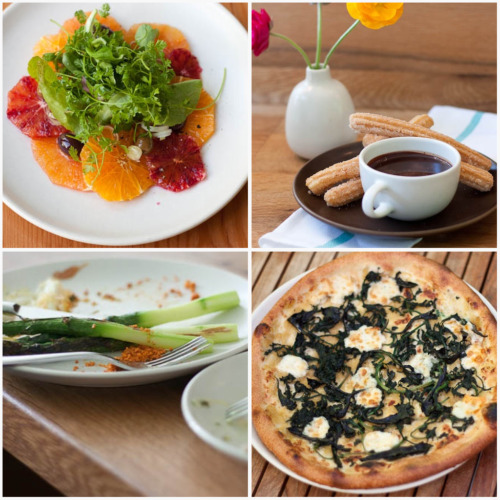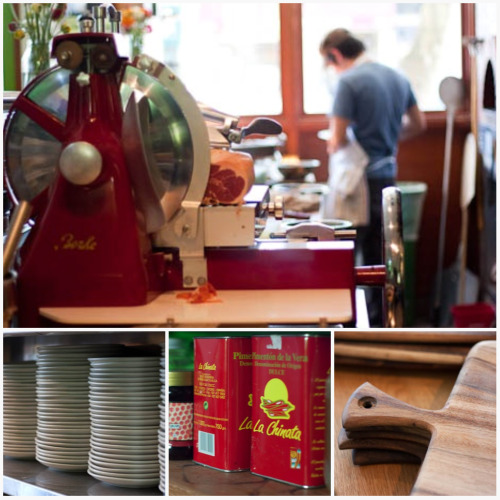Why Food?
Penny mentioned how many of her colleagues scoff at her more recent foray into food photography, which is often thought to be "lighter" than other professional work. But Penny sees food photography in a different way than so many others I've ever come across. "My photos show the story behind the food. They show humanity, " she said in our workshop. And if you look at some of her work from Saveur lately (Did you see that Texas issue?!), this is no joke. Penny elaborates, noting that "Food photos are never just about food. They're equally about people, landscapes, capturing moments, and a sense of place." This is why you don't see a lot of glossy studio shots in Penny's portfolio. She's interested in stories. And she discovers those stories through people: "Food is what connects us. It's a wonderful way to discover humanity."

Penny pushed us to take portraits in the Mission. Here are a few I "made."
A Few Bits of Inspiration
So about halfway through the morning at Contigo, I started jotting down everything Penny said. She was obviously talking about photography, but I began resonating with her tips in a broader sense. I'll refrain from getting too Zen on you, but here are a few lovely quotes that I took away with me that, I think, have broader implications than just photography:
Take risks...a person's reach should be further than their grasp.
Follow your instincts. That's what makes good pictures.
Energy happens when you have energy.
I'm never ever saying no to myself because I want to explore it, uncover it.
Your instincts are the most important element in making a photograph.

Penny de los Santos doing her thing in San Francisco
Penny's Tips on Food Photography
Unlike most professional photographers I've met, Penny is low-key with a capital "L." She seems a little hesitant to talk about her equipment, she only brings one lens out in the field and actually discourages the use of a zoom lens because she thinks it encourages laziness. She's discreet. She doesn't use fancy flashes nor does she have an assistant. She keeps it inconspicuous so she doesn't stand out or draw attention to herself--something you definitely don't want when you're shooting markets in developing countries or a family gathering in a tiny diner in Texas. That being said, Penny has some great tips on capturing a good photo. In them, you won't find technical details on adjusting your white balance or achieving bokeh. The workshop wasn't that kind of gig. Instead, we focused more on the big picture: on loosening up, gathering the gumption to photograph people fearlessly, waiting and listening for the right moment, and constantly thinking about light. Moments, stories, and light. Isn't that what pictures are comprised of in the first place? Here are a few of Penny's tips from the workshop that you may find helpful:
- Light. We've all heard it before: it's all about the natural light. But Penny's adamant about this. She simply won't shoot if there isn't proper natural light. She talks about chasing light and capturing light on location, and describes getting up far before the crack of dawn to do so. No speedlights. No fancy flashes.
- Get in the action: "You have to get in front of people. You need to get all up in there." To do this, she says you must use a fixed lens and just go for it.
- Layers and details are important. Create layers with the foreground and background of a photo: don't just shoot a flat bowl of soup. Add dimension and layers with color, a few glasses in the background, interesting details.
- Telling a story about the food is critical. To do this, vary your angles, seek out the light, and photograph different stages of the meal: in preparation, plated, and in process (being eaten).
- Perspective: Challenge yourself. Try taking photos from above and from below. Shake up the way you usually do things.
- Camera angles and visual pacing: variety is key. You need to work with many camera angles to keep your shots fresh and interesting. Your go-to angles will be the overhead angle (good for food with lots of color), ¾ view, and side view.
- Patience. Wait. When photographing people or scenes, Penny makes people comfortable and then sits back and waits for them to begin acting naturally and forget that she's there.



